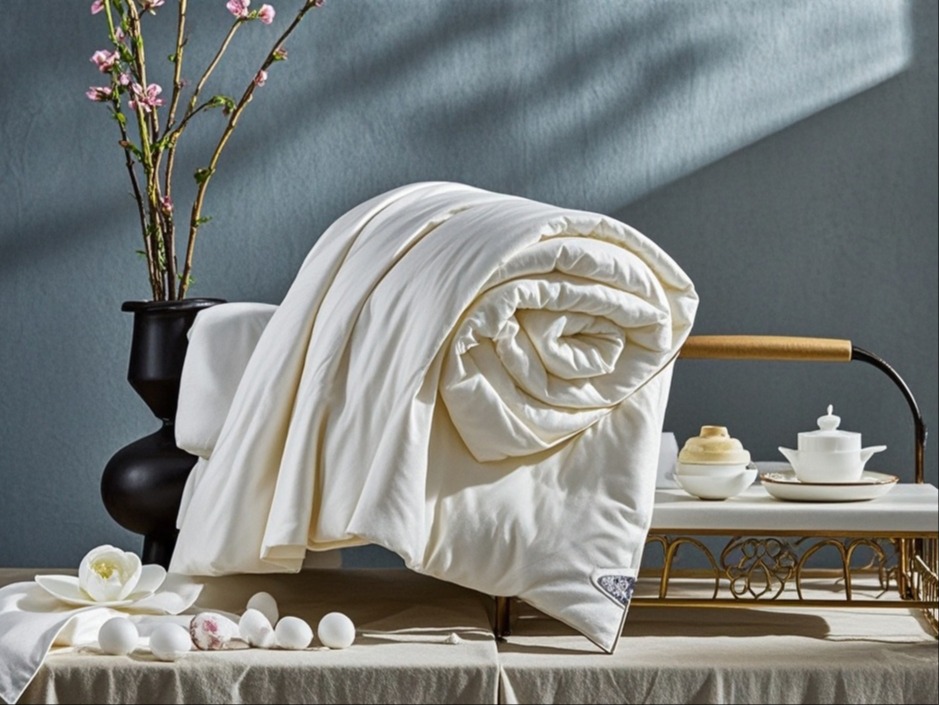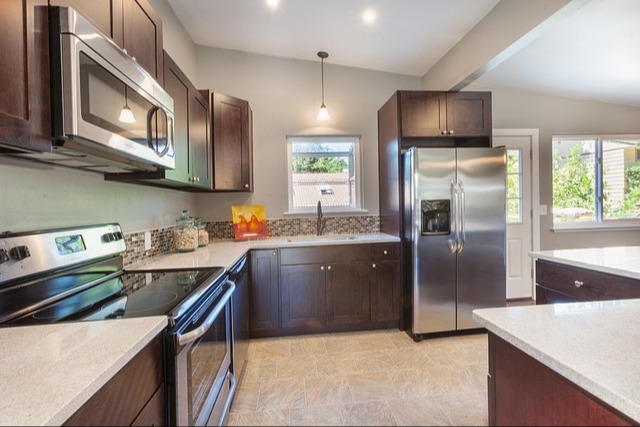Living in a small space doesn’t mean you have to feel cramped. With a few clever design moves, you can trick the eye into seeing more square footage than actually exists. Whether you're working with a tiny apartment, a cozy studio, or just a room that feels a little too snug, these expert-backed tips will help you maximize every inch.
1. Capitalize on Natural Light
Nothing opens up a space like good ol’ sunlight. If you’re lucky enough to have windows, ditch heavy drapes and opt for sheer or light-filtering shades—think linen curtains or roll-down mesh. The goal? Let that natural light flood in.
In this split bedroom/desk setup, two-toned walls and a custom bed with built-in storage keep things functional while playing with depth. The color-blocked ceiling draws the eye upward, making the room feel taller than it is.
2. Hang a Statement Mirror
Mirrors are the ultimate illusionists in small-space design. Natasha Nyanin, a Manhattan studio dweller, swears by a bold mirror to reflect light and create the illusion of depth.
Pro tip: Hang curtains as close to the ceiling as possible. This elongates the walls, making the room feel more spacious.
3. Get Crafty With Paint
Paint isn’t just for color—it’s a tool to manipulate perception. A long, narrow hallway with no natural light? Go dark. While you might think black would shrink a space, it actually blurs boundaries, making walls recede and ceilings appear higher.
4. Choose Built-Ins
Built-in shelving and cabinets are a small-space savior. Alicia Hassen Roche of Brooklinteriors loves how they maximize storage while adding architectural interest.
Take this reading nook: The built-ins provide storage, a desk, and even a cozy spot to curl up—all without eating into precious floor space. Bonus points if you line the back with textured wallpaper for extra dimension.
5. Go for Dark Colors
Who says dark hues make a room feel smaller? This midnight blue kitchen proves otherwise. Instead of fighting poor lighting, the designer leaned into the moody vibe, using deep blue cabinets and matching tile to create a rich, expansive feel. The wood accents pop, and the space suddenly feels luxe rather than cramped.
6. Choose Compact Furnishings
Bulky furniture can overwhelm a small room. Instead, opt for sleek, space-saving pieces. In this Austin bungalow, a narrow coffee table keeps the living area open while still providing function.
Key move: Keep large surfaces (walls, countertops) light to maintain an airy feel.
7. Leave Walls Blank
Resist the urge to cover every inch of wall space. Blank areas create breathing room, preventing visual clutter. In small living spaces, anchor the room with one or two larger furniture pieces, then let the rest of the space stay open. Too many small items can make a room feel disjointed and cramped.
8. Create Zones
Even in a studio, defining different "zones" can make a space feel bigger. Jenny Davis, a small-space pro, uses furniture to divide areas without blocking light.
Example: A toy hub separates her kids’ play area from the living room, keeping the space open while clearly marking different functions.
9. Up the Scale
Big art in a small room? Absolutely. A large statement piece on a main wall can make the entire space feel grander. This dining room’s oversized artwork commands attention, making the room feel more expansive than it is.
Final Thoughts
Small-space living doesn’t mean sacrificing style or comfort. With these designer tricks—playing with light, mirrors, paint, and smart furniture choices—you can turn even the tiniest room into a space that feels open, intentional, and totally you. So go ahead, get creative—your small space is about to feel a whole lot bigger.
























